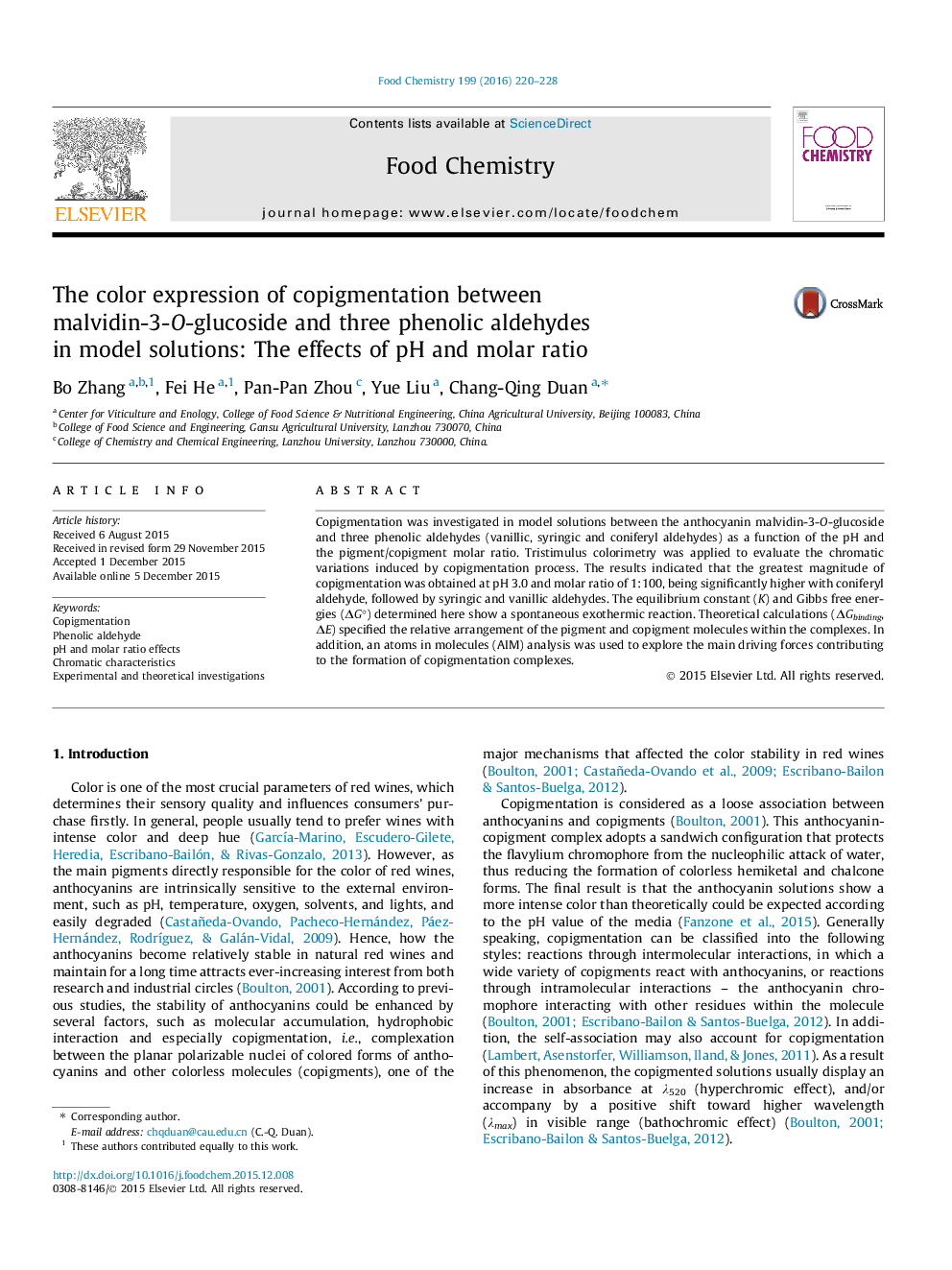| Article ID | Journal | Published Year | Pages | File Type |
|---|---|---|---|---|
| 7589679 | Food Chemistry | 2016 | 9 Pages |
Abstract
Copigmentation was investigated in model solutions between the anthocyanin malvidin-3-O-glucoside and three phenolic aldehydes (vanillic, syringic and coniferyl aldehydes) as a function of the pH and the pigment/copigment molar ratio. Tristimulus colorimetry was applied to evaluate the chromatic variations induced by copigmentation process. The results indicated that the greatest magnitude of copigmentation was obtained at pH 3.0 and molar ratio of 1:100, being significantly higher with coniferyl aldehyde, followed by syringic and vanillic aldehydes. The equilibrium constant (K) and Gibbs free energies (ÎG°) determined here show a spontaneous exothermic reaction. Theoretical calculations (ÎGbinding, ÎE) specified the relative arrangement of the pigment and copigment molecules within the complexes. In addition, an atoms in molecules (AIM) analysis was used to explore the main driving forces contributing to the formation of copigmentation complexes.
Related Topics
Physical Sciences and Engineering
Chemistry
Analytical Chemistry
Authors
Bo Zhang, Fei He, Pan-Pan Zhou, Yue Liu, Chang-Qing Duan,
